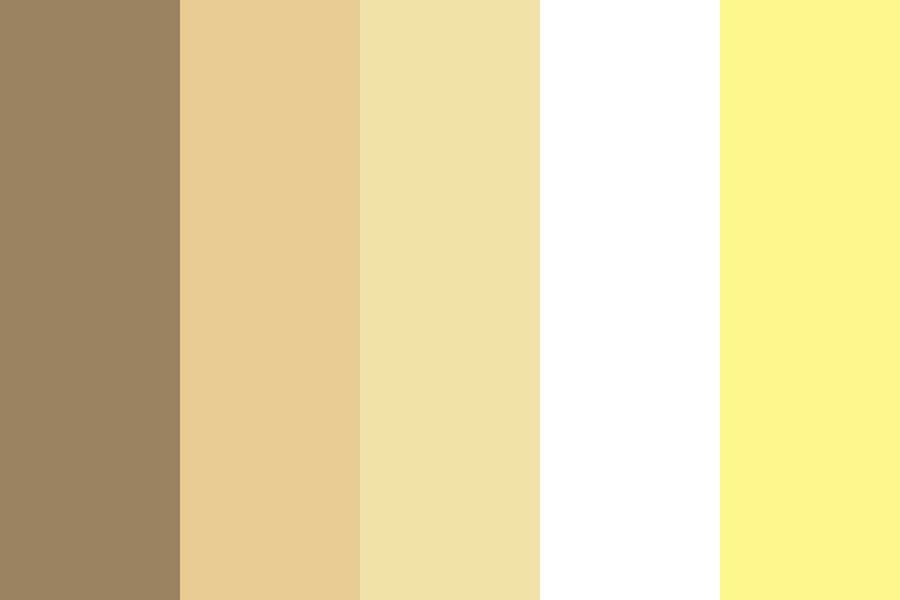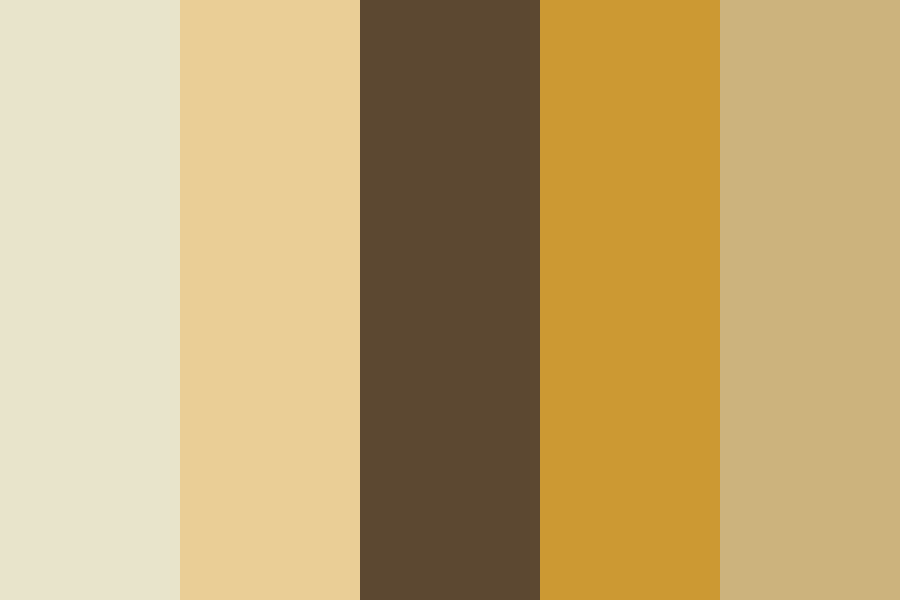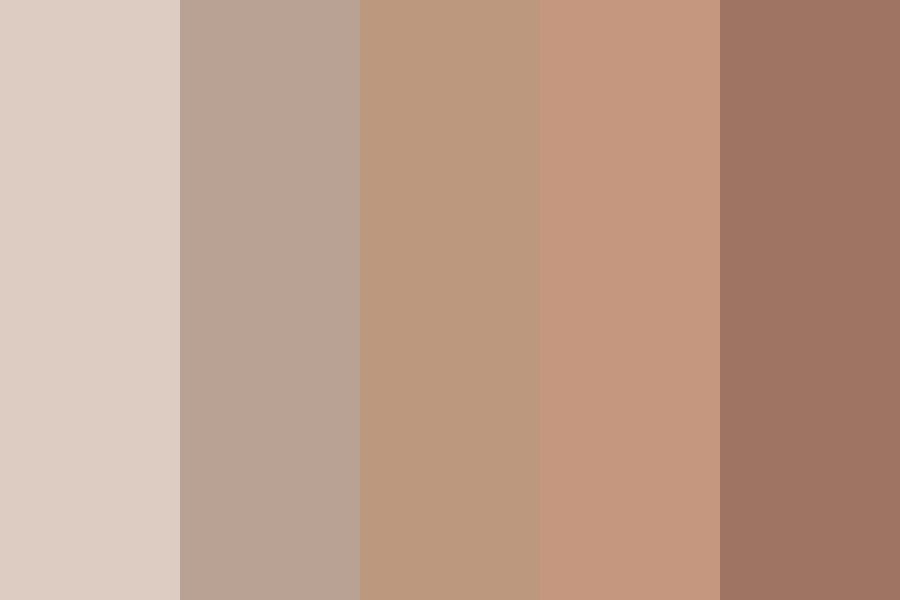Nude Color Palette: Your Ultimate Guide To Timeless Elegance
Have you ever wondered why the nude color palette is taking over the design world? It's not just about simplicity—it's about sophistication, versatility, and a touch of class that never goes out of style. Whether you're diving into interior design, fashion, or digital art, understanding the nude color palette can elevate your creative projects to the next level. So, let's get into it and explore why this palette is a game-changer!
You might be thinking, "What's so special about beige and taupe?" But hold up—there's more to it than meets the eye. The nude color palette isn't just about one shade; it's a spectrum of earthy tones that blend seamlessly with almost anything. Think of it as the Swiss Army knife of colors—always ready to adapt and enhance whatever it touches.
And let's not forget its practicality. In a world where trends come and go faster than you can say "millennial pink," the nude color palette offers something truly unique: timelessness. It's that rare quality that makes it perfect for both modern and classic aesthetics. So, whether you're a newbie or a seasoned pro, this guide will help you master the art of using nude colors like a boss.
Read also:Evelyn Rose Nude A Comprehensive Look At The Controversy And The Star
Understanding the Nude Color Palette
What Exactly Is the Nude Color Palette?
Alright, so let's break it down. The nude color palette consists of soft, neutral tones inspired by nature. Think sandy beaches, warm stones, and the earth itself. It's not just about beige; it's a family of colors that includes shades like taupe, ivory, camel, and even muted pinks. These colors are often described as warm, inviting, and calming—and for good reason.
But here's the kicker: the nude palette isn't just for wall paint or furniture. It's versatile enough to work in fashion, makeup, and even digital design. Imagine a website with a soft ivory background paired with taupe text—it's clean, professional, and easy on the eyes. That's the power of the nude palette right there.
Why Should You Care About Nude Colors?
Let's face it—trends come and go, but the nude color palette stays relevant. Why? Because it's adaptable. Whether you're designing a room, creating a mood board, or picking out an outfit, these colors never scream "outdated." They're the perfect foundation for any project, offering a sense of calm and balance.
Plus, they're super easy to work with. Unlike bold colors that can overwhelm, nude tones provide a blank canvas for creativity. You can layer them, mix them with brighter hues, or let them shine on their own. It's like having a secret weapon in your creative arsenal.
The Psychology Behind Nude Colors
How Nude Colors Affect Our Minds
Colors have a way of influencing our emotions, and the nude palette is no exception. These earthy tones evoke feelings of relaxation, warmth, and stability. They remind us of nature, which is why they're often associated with comfort and peace.
Studies have shown that neutral colors like beige and taupe can reduce stress and promote focus. That's why they're popular in offices, schools, and even hospitals. Imagine walking into a room painted in soft ivory—it instantly feels like a safe space, doesn't it?
Read also:Milan Mirabella Nude The Truth Behind The Controversy
The Role of Nude Colors in Branding
Brands are catching on to the power of nude colors too. Many luxury brands use these tones to convey sophistication and elegance. Think of high-end fashion houses or premium skincare lines—chances are, their packaging features a neutral palette. It's a subtle way of saying, "We're timeless and classy."
But it's not just about luxury. Startups and tech companies are also incorporating nude colors into their branding. They use it to create a minimalist aesthetic that feels modern yet approachable. It's all about striking the right balance between professionalism and warmth.
Using Nude Colors in Interior Design
Creating a Cozy Atmosphere
When it comes to interior design, the nude color palette is a dream come true. It's perfect for creating cozy, inviting spaces that feel both modern and timeless. Imagine a living room with taupe walls, ivory curtains, and a camel-colored sofa. Add a few pops of color with throw pillows or artwork, and you've got a space that's both functional and stylish.
And don't forget about lighting! Nude tones work wonders with natural light, making a room feel brighter and more open. If you're working with smaller spaces, these colors can help create the illusion of more space without overwhelming the eye.
Pairing Nude Colors with Other Tones
One of the best things about the nude palette is how well it pairs with other colors. You can go bold with deep greens or blues for a dramatic effect, or keep things simple with pastels for a softer look. The key is to find the right balance—too much contrast can make the space feel chaotic, while too little can make it feel dull.
Here's a pro tip: use the 60-30-10 rule. Dedicate 60% of the space to your main nude color, 30% to a secondary color, and 10% to an accent color. This ensures that your design is cohesive and visually appealing.
Nude Colors in Fashion
Why Nude Is a Fashion Staple
When it comes to fashion, the nude color palette is a wardrobe essential. It's versatile enough to work for any occasion, from casual outings to formal events. Think about it—how many times have you reached for a beige blouse or a camel coat? Probably more than you can count.
And let's not forget about footwear. Nude heels and sandals are a timeless choice because they elongate the legs and create a seamless look. It's like magic for your outfit game.
How to Style Nude Colors
Styling with nude colors doesn't have to be boring. In fact, it's all about experimenting with textures and layers. Mix matte fabrics with shiny ones, or layer different shades of nude for a monochromatic look. You can also add accessories in bold colors to keep things interesting.
Here's a fun fact: nude colors are great for creating optical illusions. Pair a nude top with a darker skirt or pants, and you'll instantly look taller and slimmer. It's a trick used by stylists everywhere!
Exploring Nude Colors in Digital Design
Why Digital Design Loves Nude
In the digital world, the nude color palette is a designer's best friend. It's perfect for creating clean, user-friendly interfaces that don't distract from the content. Think about websites, apps, or presentations—using soft neutral tones as a background can make text and images stand out without being overwhelming.
Plus, these colors are accessible to people with color vision deficiencies. Unlike bright or contrasting colors, nude tones are easier to perceive, making them a great choice for inclusive design.
Tips for Using Nude Colors Digitally
When working with digital design, it's important to consider contrast and readability. Use tools like color checkers to ensure that your text is legible against the background. And don't be afraid to experiment with gradients or patterns—nude colors can handle it.
Another tip: use white space effectively. Nude tones already create a sense of calm, so adding too much clutter can ruin the effect. Keep things simple and let the colors do the talking.
Common Mistakes to Avoid
Too Much of a Good Thing
While the nude color palette is amazing, it's possible to overdo it. Using too many similar shades can make a space feel monotonous or uninspired. Remember, even neutral tones need a little drama to keep things interesting.
Here's a quick checklist: if your space feels too "blah," it's time to add some pops of color. A bright accent wall, a colorful rug, or even a bold piece of art can make all the difference.
Ignoring Contrast
Contrast is key when working with nude colors. Without it, your design can feel flat or uninviting. Make sure to incorporate different textures, patterns, and shades to create depth and interest.
For example, pairing a matte beige sofa with a shiny ivory coffee table adds visual intrigue. It's all about finding the right balance between simplicity and complexity.
Expert Tips and Tricks
Mastering the Nude Palette
So, you're ready to dive into the world of nude colors. Here are a few expert tips to help you get started:
- Start with a neutral base and build from there.
- Experiment with different textures to add depth.
- Don't be afraid to mix warm and cool tones.
- Use accessories to add personality and flair.
Remember, the nude color palette is all about balance. It's not about using one shade—it's about creating a harmonious blend of tones that work together.
Staying Inspired
Staying inspired is crucial when working with any color palette. Follow design blogs, check out Pinterest boards, and explore social media for ideas. You'll be surprised at how many creative ways people are using nude colors in their projects.
And don't forget to trust your instincts. If something feels right, go for it. After all, design is a personal journey, and the nude palette is just the beginning.
Conclusion
So, there you have it—the ultimate guide to the nude color palette. From its psychological effects to its versatility in design, this palette truly is a game-changer. Whether you're a designer, a fashionista, or just someone looking to freshen up their space, the nude palette has something for everyone.
Now it's your turn to take action. Share your thoughts in the comments below, or tag us in your projects on social media. And don't forget to explore our other articles for more design inspiration. Happy creating!
Table of Contents
- Understanding the Nude Color Palette
- The Psychology Behind Nude Colors
- Using Nude Colors in Interior Design
- Nude Colors in Fashion
- Exploring Nude Colors in Digital Design
- Common Mistakes to Avoid
- Expert Tips and Tricks
- Why Should You Care About Nude Colors?
- Why Digital Design Loves Nude
- Staying Inspired
And that's a wrap! Let us know what you think and keep exploring the beauty of the nude color palette. Until next time, stay creative!



